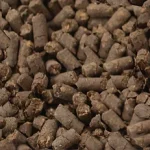One of the most important natural elements is Nitrogen as it supports all living organisms by making up a huge chunk of the air we breathe. For instance, it also contributes substantially towards promoting plant growth. You will learn about the Nitrogen cycle in this blog, the circulation of nitrogen where it gets reused by different organisms. Moreover, we will be learning about farming practices influenced by the introduction of Nitrogen fertilisers, and how Australian farmers can add nutrients to their farms for yielding better crop production.
Understanding Nitrogen: The Essential Element
Nitrogen takes up more than three-quarters of Earth’s atmosphere and is necessary for all living organisms’ survival.
Plants badly need nitrogen as its basic unit of proteins- amino acids depend on nitrogen. The enzymes that influence metabolic processes also depend on this natural element. Now let’s get really into it, the chlorophyll required for photosynthesis, guess what it is made up of? Its composition includes nitrogen elements. It should be noted that if nitrogen is not sufficiently available in the soil, then it may lead to a plant’s inability to produce proteins. These proteins are essential for their development, reproduction, and survival.
If we look at the prime nutrients- Nitrogen, Phosphorus and Potassium, the Nitrogen element is considered paramount. It encourages root growth in plants, increases the uptake of nutrients from the soil, and is very important for the growth of green tissues. For a farmer, Nitrogen must be present at an adequate level to gain maximum return on crops.
The Nitrogen Cycle: A Continuous Transformation
The nitrogen cycle is a series of complex biochemical processes that transform nitrogen from its inert form in the atmosphere into compounds usable by plants. This continuous cycle makes sure that nitrogen is perpetually made available to support plant life.
Key Processes in the Nitrogen Cycle
Nitrogen Fixation: Atmospheric nitrogen (N₂) is converted into ammonia (NH₃) by soil bacteria and certain crops, such as legumes. This process can also be achieved industrially to produce nitrogen-based fertilisers.
- Mineralisation: Soil microbes decompose organic matter, releasing ammonium (NH₄⁺), which plants can absorb. This process converts organic nitrogen elements to their inorganic forms.
- Nitrification: Nitrifying bacteria convert ammonium into nitrate (NO₃⁻), another plant-available form of nitrogen.
- Assimilation: Plants absorb nitrate and ammonium through their roots, incorporating them into plant tissues.
- Denitrification: In anaerobic conditions, denitrifying bacteria convert nitrate back into nitrogen gas (N₂), releasing it into the atmosphere.
The Balancing Act of Nitrogen Management
For the sake of agriculture, nitrogen management is very important. A fertiliser with nitrogen needs to be administered in such a way that it has neither too little nor too much because either can damage plants and the ecosystem.
Applying Nitrogen Fertilisers
Urea, whose chemical composition is [CO(NH2)2], is one of the most widely used nitrogen fertilisers in Australia. Its constant use is because of the high nitrogen content (46%) in urea. But, urea must be hydrolysed by soil enzymes to release ammonia to make it available to plants.
Application Methods and Timing
Proper application methods and timing can help in maximising the benefits of nitrogen fertilisers. Factors like soil type, crop requirements, and environmental conditions play an important role in determining the optimal application strategy. Common application methods include:
- Broadcasting: This involves equally spreading the fertiliser over the soil surface, whether before or after planting. It is common for dense foliage crops or when there is a need to fertilise large areas.
- Banding: This method involves placing the fertiliser in concentrated bands near the plant roots, to make sure that the nutrients are readily available for uptake. Banding is commonly used for row crops and is effective in minimising nutrient loss.
- Foliar Spraying: In this method, a liquid nitrogen fertiliser solution is applied directly to the leaves of plants. This can be useful for addressing nutrient deficiencies quickly or providing supplemental nitrogen during critical growth stages.
- Fertigation: This involves applying liquid nitrogen fertilisers through irrigation systems, such as drip or sprinkler systems. Fertigation allows for precise control over nutrient delivery and can be personalised to the specific needs of different crops or their different growth stages.
Timing is also extremely crucial, as plants have varying nitrogen requirements throughout their growth cycle. Many farmers opt for split applications, where nitrogen is applied in multiple doses throughout the season, for a consistent supply of nutrients and minimise the losses.
Sustainable Nitrogen Management with Worm Hit
We trust sustainable farming techniques can be promoted by utilisation of our top-of-the-line fertilisers which are derived from worms. Worm Hit offers premium worm castings, for example, pellets and bricks that boost soil health as well as promote effective cycling of nitrogen thereby minimising dependence on artificial fertilisers.
Advantages of Worm Compost Fertiliser
- Enhanced Soil Microbiology: Worm compost enriches the soil with beneficial microbes that aid in the mineralisation and nitrification processes, maintaining a steady supply of plant-available nitrogen.
- Improved Soil Structure: Organic matter from worm compost improves soil aeration and water retention, which will reduce the risk of denitrification and leaching.
- Sustained Nutrient Release: Worm compost provides a slow and steady release of nutrients, to promote long-term soil fertility.
Implementing the 4R Nutrient Stewardship
Worm Hit ticks the 4R Nutrient Stewardship framework:
- Right Source: Our worm compost is a natural, balanced source of nutrients.
- Right Rate: Our products make sure that plants receive the correct amount of nitrogen without over-application.
- Right Time: The slow-release nature of worm compost matches the nutrient uptake patterns of plants.
- Right Place: Worm compost improves soil health, maintaining nutrient availability in the root zone where they are needed most.
As a farmer, you would be familiar with such terms and strategies if you are responsible for the fertiliser needs of your farm. If you haven’t already, check out 4R Nutrient Stewardship to better nourish your produce.
Protecting Nitrogen Investments
To protect the nitrogen investment, farmers can use nitrogen stabilisers and follow best management practices. Worm Hit’s products are designed to complement these strategies by enhancing soil health and nutrient availability.
The Future of Nitrogen Management
Sustainable farming massively needs efficient management of nitrogen, which is necessary for crop growth. Effective nitrogen utilisation by farmers depends on the knowledge behind the nitrogen cycle and the application of what is recommendable. This way, farmers can improve their crop production from an optimised nitrogen application level without having adverse effects on the environment.
Worm Hit supplies compost fertilisers for worms, which act as a natural way to manage nitrogen sustainably. Our products assist in improving soil fertility and facilitating efficient nutrient circulation, making it possible for farmers to undertake profitable as well as ecologically sound crop production.




